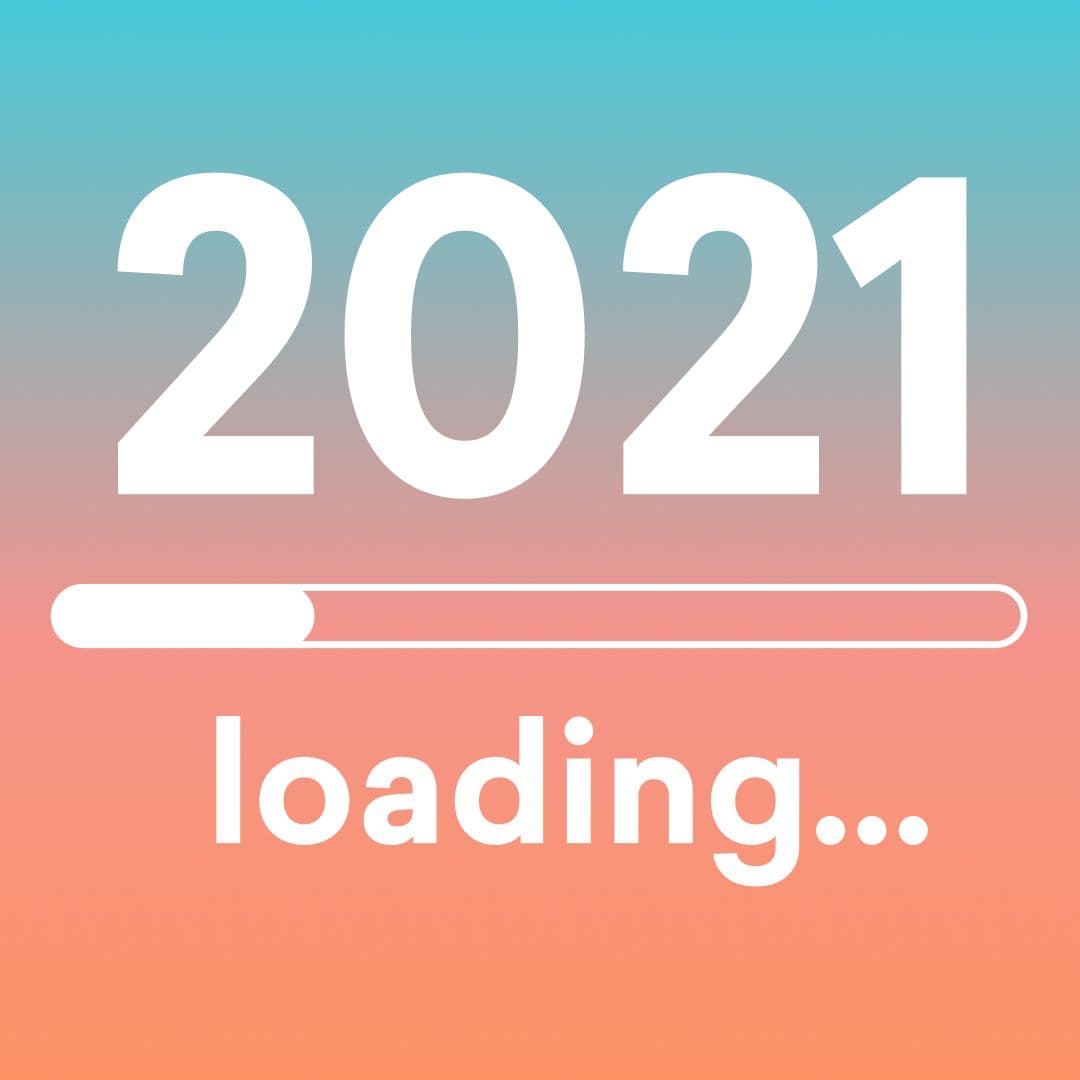Industry Disruption and Building Back Better: How 2020’s Impact Will Drive New Customer Engagement Growth in 2021
Published on March 18, 2021/Last edited on March 18, 2021/10 min read


Sam Miller
Strategic Business Consultant, Braze2020 was a watershed year. The discovery of COVID-19 triggered an escalating public health emergency that impacted every country on earth and left millions locked down for significant chunks of the year. That led to a seismic shift in consumer behavior and expectations and forced brands worldwide to rethink their business models, make major changes on the go, and embrace digital transformation to a degree that had seemed years off before the crisis.
Here at Braze, our Industry Solutions team has been carefully monitoring the impact of 2020 and its many disruptions on customer engagement across a wide variety of verticals. With the new year now well underway, let’s draw on some of the insights and learnings we’ve derived from an exceptional, challenging period to share predictions about what all of this means moving forward. To start, we’ll dig into the overall impact on some key industries:
Industry Deep Dives
1. Ecommerce
Let’s start by taking a look at an industry that benefited from strong “tailwinds” driven by the pandemic: The ecommerce sector, which grabbed headlines throughout 2020 due to explosive growth. That growth would have been hard to predict before COVID emerged, but felt inevitable in retrospect—the restrictions and lockdowns caused by the pandemic made online shopping a necessity and drove consumers to engage with (and adopt) new digital engagement patterns to meet their needs.
GroupM estimated that global retail ecommerce sales grew to $3.9 trillion in 2020, or 17% of equivalent global retail sales; that’s a swing of roughly four percentage points from a year earlier. In the US, retail ecommerce was forecast to have grown more than 30% during 2020, making up 16.2% of total US retail sales; in APAC, still the leader in online sales, the region accounted for 63% of total worldwide ecommerce sales.
2. Gaming
Shopping wasn’t the only sector that saw strong customer acquisition during the pandemic. In-home activities like gaming saw a major boost, thanks to a change in behavior that prioritized entertainment and socializing at home.
Digital games saw a strong growth in spending in 2020, up 12% year-over-year, hitting $127 billion across mobile, PC, and console platforms [3]. According to SuperData's year in review report, $73.8 billion of this digital spending took place on mobile. The UK mobile gamer addressable audience has grown 50% since the onset of the pandemic—the equivalent of 8.6 million new gamers, according to Facebook. In addition, watching others game or gaming esports saw a big uptick with gaming video content bringing in $9.3 billion in 2020.
3. Food Delivery
The pandemic’s impact was also strongly felt at mealtime, with increased numbers of meals eaten at home and options for “eating out” heavily limited by movement restrictions and public health concerns. In particular, as restaurants were forced to close, on-demand food delivery brands experienced an upsurge in usage, so people looked to treat themselves while safeguarding their health.
What did that look like on the ground? Just Eat, the largest UK player by order volumes, said it processed 17 million transactions in October alone, up 70% from January 2019. In the US, DoorDash grew revenue by 241% to $2.9 billion during 2020. It now connects 18 million customers with 390,000 restaurants and other merchants every month, and commanded 56% (in Jan 21) of the US meal delivery market, making it the largest in the US.
4. Travel
Not all industries experienced the upside of the pandemic-driven enforced changes to consumer lifestyles and purchasing habits. The travel space, for instance, was deeply impacted when stay-at-home orders and lockdowns were introduced, massively reducing the potential audience for travel brands.
This reduction in the number of people flying created structural challenges for airlines. The International Air Transport Association (IATA) called airlines an industry in crisis, with total losses in 2020 equating to $118 billion and demand down 61% year-over-year. Based on an estimate of 2.2 billion passengers during 2020, airlines will have lost $37.54 per passenger. The industry is looking to counter volatility in conditions and ticket prices by offering airlines the chance to hedge against future ticket revenue (as they do with fuel prices).
5. Ridesharing
The pandemic also had a major impact on the ridesharing industry, with pandemic restrictions driving down rideshare purchases by 75% year-over-year between March and April 2020, according to Braze data. Major ridesharing brands saw improvements in the second half of the year, but were still down by double-digit margins year over year in terms of active users, with some brands leaning on their involvement in the delivery space to replace some lost engagement and revenue.
6. Retail
While ecommerce boomed during the pandemic, many traditional retailers struggled. 2020’s lockdown restrictions led to the forced closure of many physical stores and helped to put some long-standing retailers into bankruptcy.
These adverse impacts led to significant job losses in the sector, with up to 250,000 forecast to be lost in the UK alone as a result of the pandemic. While the ecommerce boom offered a lifeline to many in the retail sector, it also served to put additional pressure on more traditional brick and mortar retailers. Even traditional retailers that have survived the pandemic thus far could potentially be in for longer term challenges, as they’ve racked up considerable debt to date and lack clarity on when to expect a return to physical shopping.
What Comes Next for Brands
Given all this disruption, brands need to be sure-footed as they plan for the future. So what can we learn from these changes in consumer behavior and industry responses as brands work to deliver a winning customer engagement strategy in 2021 and beyond? We’ve identified three key trends that brands should be mindful of this year, given all that’s come before:
Expect 2021 to be a Year of Retention, Instead of 2020’s Year of Acquisition
As more and more customers shifted their activities online in response to the pandemic, many digital-ready companies were inundated with waves of new customers, many of them adjacent users in terms of these companies’ core audiences. That means that 2020’s big challenge for many of these brands was figuring out how to get these newly acquired consumers to see the value in their product or service and become an engaged user.
In contrast, the challenge for these brands in 2021 is how to keep these customers as restrictions are eased and consumers could move back towards a pre-pandemic routine. That’s often a challenge in normal times and is likely to be harder as brands hit hard by COVID-19 lockdowns jockey to regain long-time customers.
One of the best ways to bolster retention and see more value from each customer is to leverage cross-channel messaging in your customer outreach strategy. Braze research has found that brands who combine in-product messaging channels like in-app messages and Content Cards with out-of-product channels like push notifications and SMS see 13% higher 30-day retention and 94% higher average customer lifetime value (LTV). This kind of approach can do a lot to keep users engaged and support stronger customer loyalty and impact over the long haul.
Create Value-Add Conversations in an Agile Way
During the pandemic, we all saw how quickly customer behavior can change. That means that one of the key customer engagement differentiators moving forward is going to be the ability to take action at the speed of the customer.
What does that look like in practice? If you’re a travel company, for instance, and I’ve booked flights to a city for next week, but that area then enters a lockdown, that represents an information gap that needs to be filled by your company—it’s business critical. Being able to respond to this message quickly and to remove ambiguity with a minimum of fuss is key to delivering the customer conversation in the right way. It’s empathetic to your customers' needs and allows your company to frame the conversation in a way where you can aid the customer and drive outcomes that are beneficial to your business: Think rebooking for a later date, rather than having to hand out a refund.
That said, there are a number of technology obstacles that can make it difficult for many brands to act this quickly: Data latency, speed of campaign creation, and the actionability of customer profiles. These are all eminently solvable problems with the right technology stack and the right strategy, but it takes thought and care to make it happen. So it’s a worthwhile exercise to think through how quickly you can respond to changing conditions, while still delivering on the needs of your customers.
Data Is at the Core of Everything
Consumer expectations around messaging and customer experience are higher than ever. That’s a challenge—since your brand has to live up to those high expectations—but for organizations that have their customer engagement house in order, it’s also something that can be used as a moat to increase your competitive advantage over rivals who are lagging when it comes to effective engagement. The challenge for customer engagement in 2021 is that brands’ ability to facilitate an effective and human conversation with consumers depends on their ability to understand those consumers’ needs and act accordingly.
What does this mean for balancing targeting and personalization with privacy rules and regulations? Keep in mind that consumers are becoming more aware of their data and how it’s being used—according to McKinsey, 87% of consumers said they would not do business with a company if they had concerns about its security practices. At the same time, companies need to deal with changing data data practices inspired by new legislation like the EU’s General Data Protection Regulation (GDPR) and the California Consumer Privacy Act (CCPA), as well changing rules from GAFA tech giants like Apple, who announced last year that brands will now require explicit consumer opt ins to leverage their platform’s Identifiers for Advertisers (IDFAs).
Not all data is created equally, and these new rules and restrictions do a lot to highlight the importance of capturing and acting on first-party data, as well as the need to be transparent and thoughtful in how that data collection—and its purposes—are communicated to your customer base. The upshot? To provide the personalized experiences that consumers expect, you need data; but to get that data ethically, you need to ask customers to share it and explain why you need it (and how you’ll use it). As customers are becoming more savvy, the tradeoff in value has to be clear: Allow us to use your data to drive a relevant and meaningful conversation/experience with our brand.
Final Thoughts
This year will come with its share of challenges, but capitalizing on changing consumer behavior and recognizing and acting on industry forces will be key to meeting your next customer engagement challenges. It’s more important than ever to have human conversations with your customer base, and to do that, you need to build your communications on context and relevance, allowing you to convey clear value to your audience and drive long-term customer loyalty. It may not be easy, but getting it right is essential to the future of your business.
To learn more about customer engagement and what the landscape looks like this year, check out our 2021 Global Customer Engagement Review.
Be Absolutely Engaging.™
Sign up for regular updates from Braze.
Related Content
View the Blog
The new inbox reality: How iOS changes are reshaping email marketing

Aparna Prasad

Experience optimization: Turning data insights into better journeys

Team Braze

December 2025 Bonfire Marketer of the Month: Jagex’s Emma Oliver
